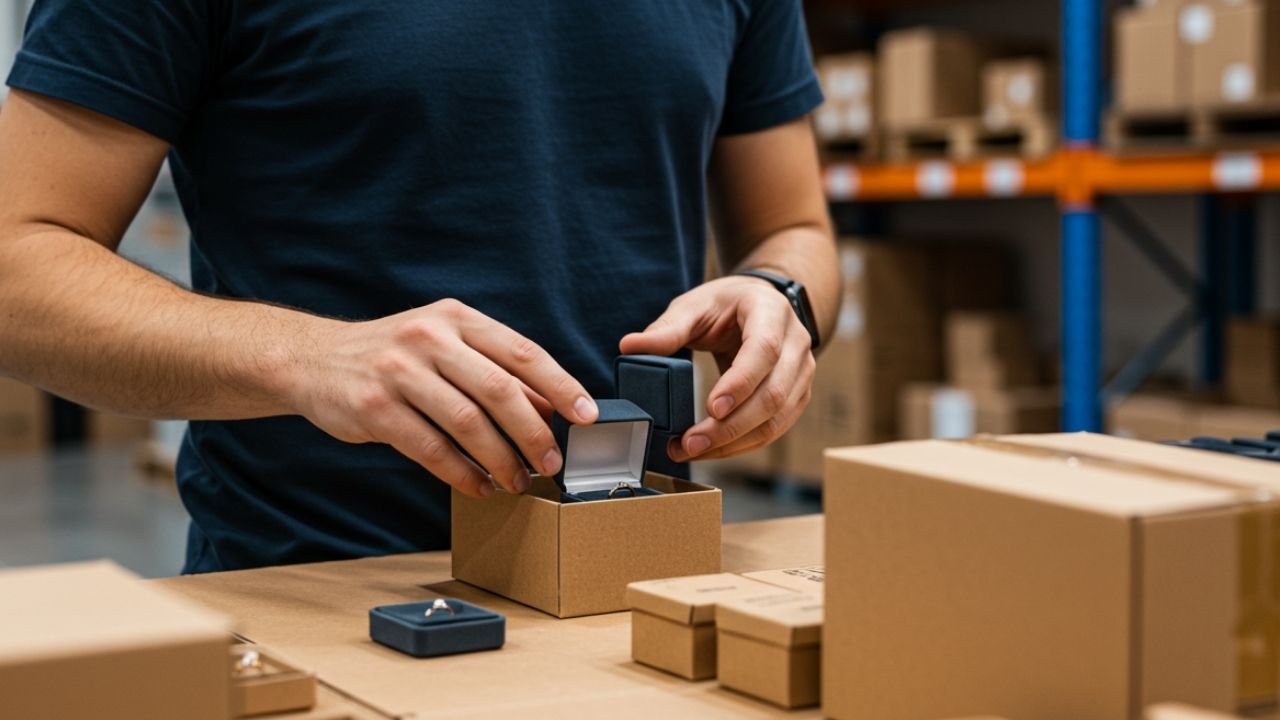
Amazon has strict packaging and prep requirements for any item entering its fulfillment network – and small jewelry pieces are no exception. As a seller (whether using Fulfillment by Amazon or Seller Fulfilled Prime), you’ll want to package your jewelry like a pro to avoid damage, loss, or compliance issues. Below, we boil down the essentials of bagging, barcodes, and fragility rules for small jewelry items, with a seasoned seller’s tips, screenshots, and checklists for clarity.
Jump right in: Amazon’s Rules for Small Jewelry Items: Prep labeling & Drop Tests
Why Proper Prep Matters for Small Jewelry
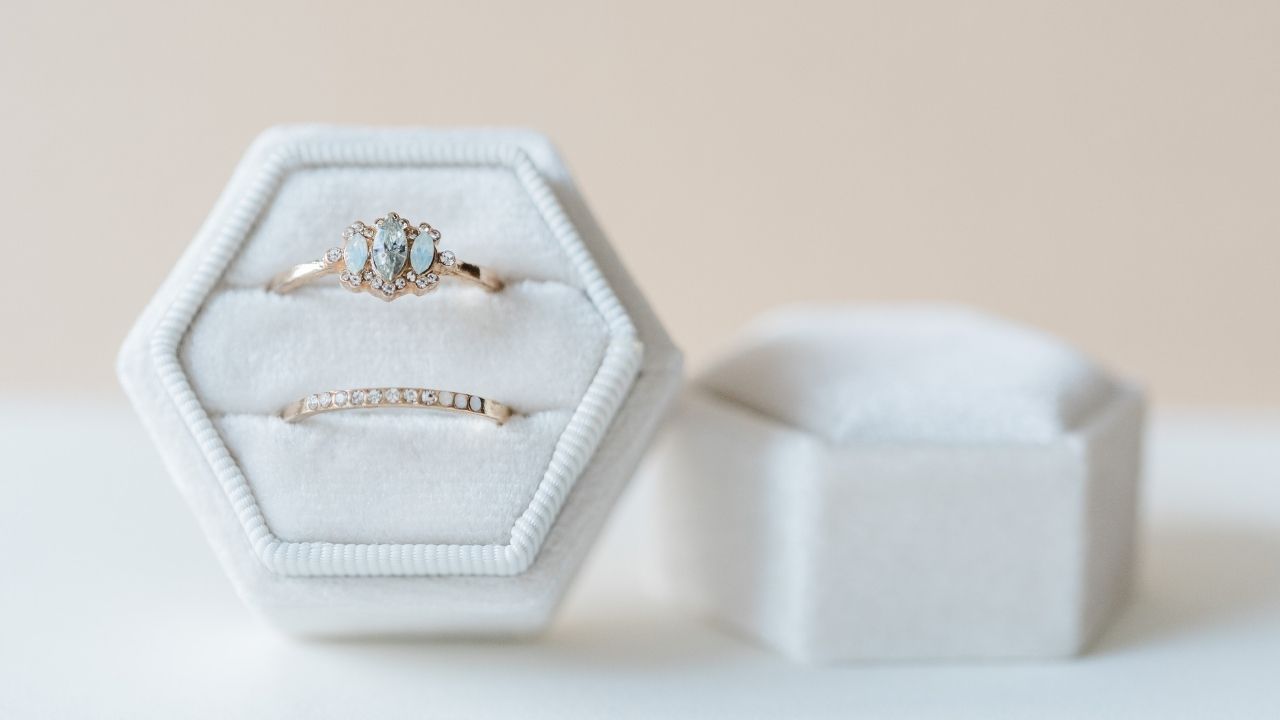
Small jewelry items (think rings, earrings, pendants – often in tiny pouches or boxes) can easily get lost or damaged if not prepped correctly. Amazon fulfillment centers handle millions of units, so every item must be in a secure, scan-ready package. Amazon even warns that inventory can be refused or marked unsellable if packaging isn’t up to standard. In other words, poor prep might lead to your items getting repackaged (with a prep fee), returned, or even destroyed by Amazon. To keep your business running smoothly, follow Amazon’s rules – they’re there to protect your products and your seller reputation.
Seasoned Seller Tip: Think of prepping your jewelry as protecting your investment. A little extra time on packaging and labeling now can save you from unhappy customers, returns, or Amazon penalties later. I’ve learned that it’s far better to over-protect a $50 necklace than to have it arrive tangled or missing!
Bagging and Packaging Guidelines for Jewelry
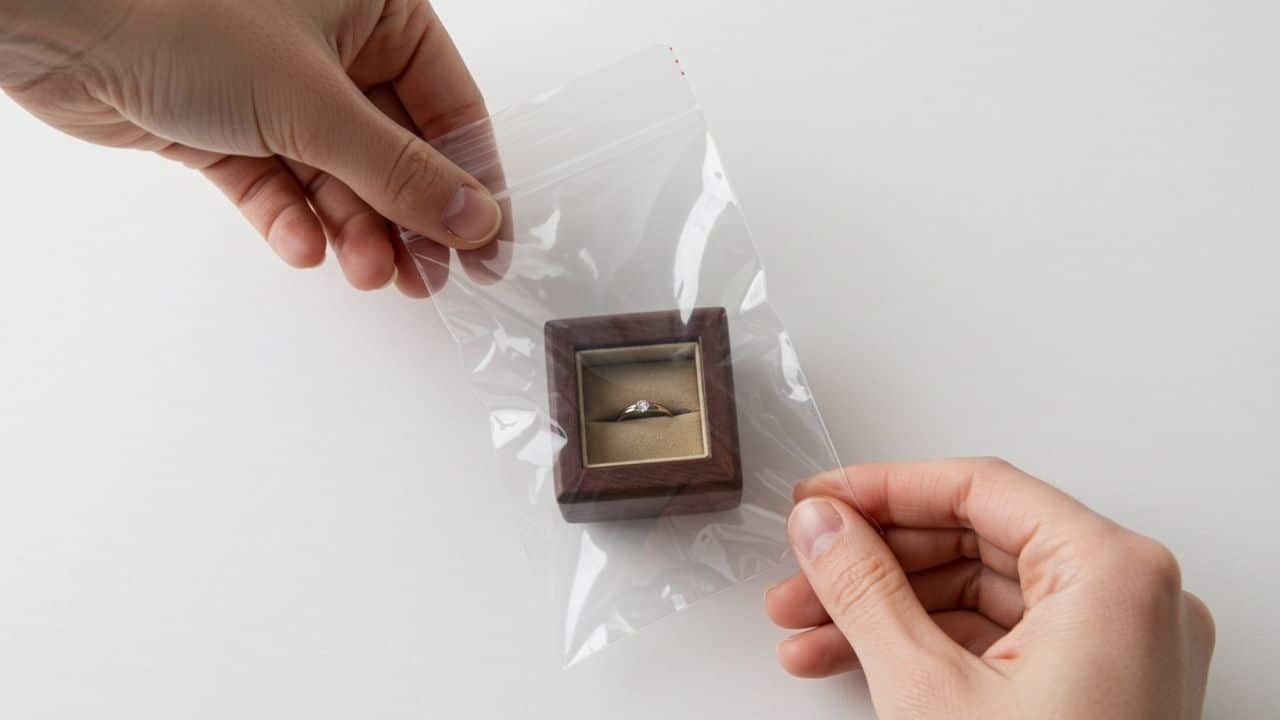
Small jewelry items often come in pouches or gift boxes – but Amazon may require additional packaging to keep them safe and trackable. The goal is to prevent dust, dirt, moisture, or loss of these tiny items during storage and shipping. Here’s how to package them right:
Use Poly Bags for Loose Items or Fabric Pouches:
If your jewelry is in a soft pouch or otherwise exposed, place the entire unit in a clear poly bag. The bag keeps out dust and prevents the item from slipping out or getting separated. Only one item per bag – don’t throw multiple pieces in together. The bag should be just a bit larger than the item, not excessively oversized and not so tight that it might tear.

Barcodes on the Outside:
When using bags, make sure the item’s scannable barcode (either the UPC or Amazon FNSKU label) is visible on the outside. You can either affix the FNSKU label to the outside of the bag or ensure a manufacturer barcode can be scanned through the plastic. Do NOT tuck a barcode inside a pouch or where it’s obscured – warehouse staff shouldn’t have to open anything to scan your product.
Bag Quality and Specs:
Amazon has specific poly bag requirements. Bags must be transparent, at least 1.5 mil thick, and completely sealed (zip-lock or heat seal). If the bag’s opening is 5 inches or more (measured flat), it must have a suffocation warning label printed or attached in a prominent spot. This warning is a safety requirement – Amazon will re-bag or refuse items without it. Also, excess bag material should not extend more than 3 inches beyond the product inside (you don’t want a huge floppy bag that can snag on things).
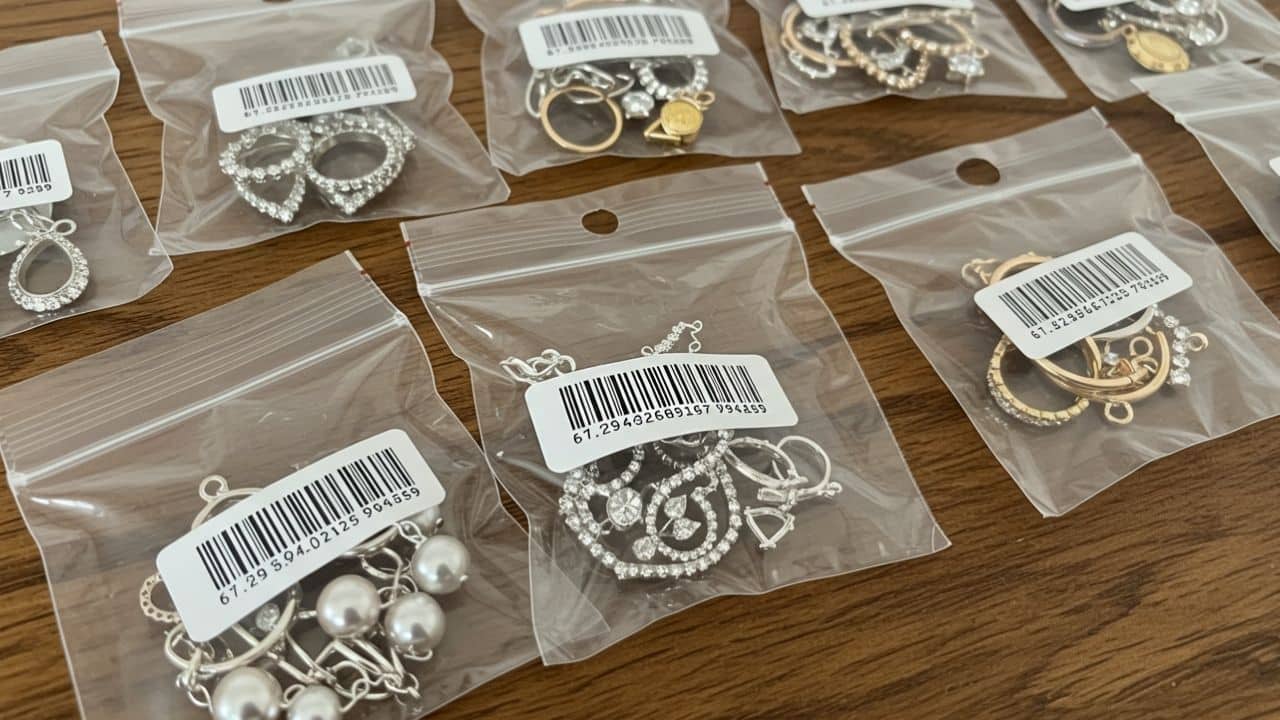
Examples – Good vs. Bad:
Above: Small jewelry items in pouches, each sealed in its own clear poly bag with an Amazon barcode label on the outside. This meets Amazon’s prep guidelines by protecting the items from dust and keeping barcodes scannable.
On the flip side, avoid using bags that are way too big or not sealing a pouch at all. Amazon’s training images show that a pouch just thrown loosely in a big bag (with the label floating around separately) is considered improperly packaged – the pouch could slip out or the barcode could get lost. Always choose a snug bag size and affix the label firmly to the outside.
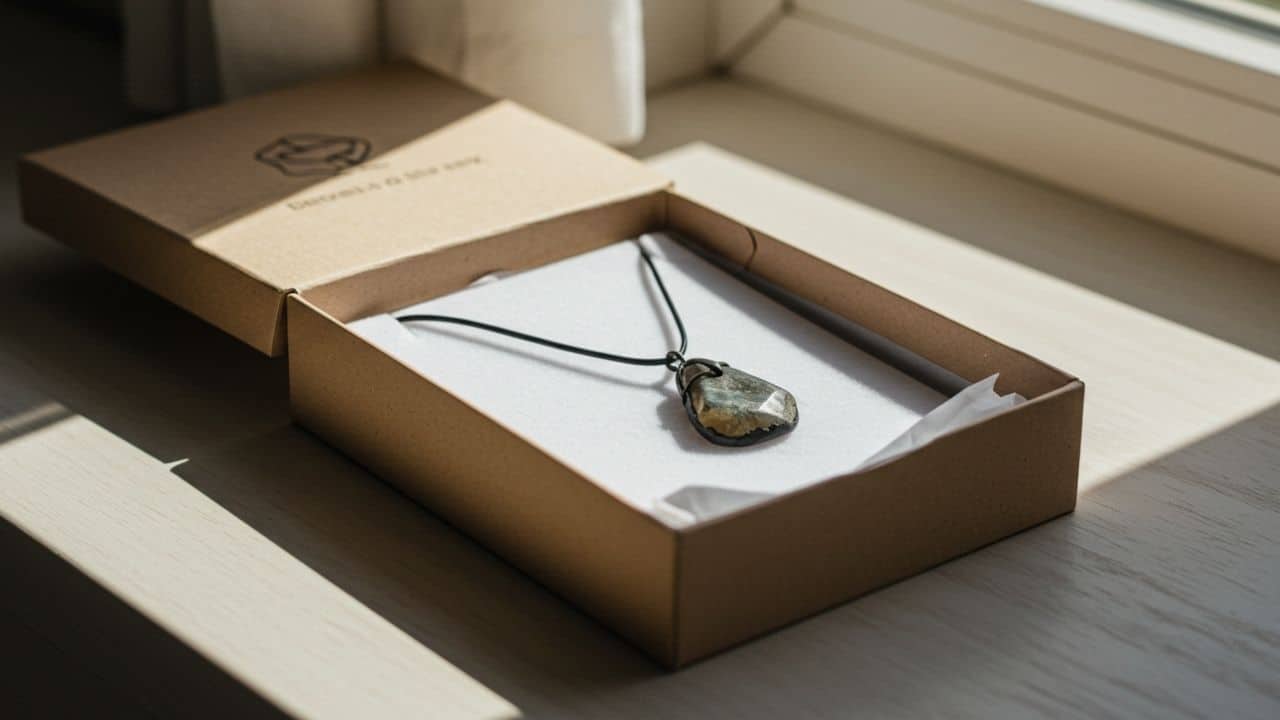
Jewelry in Boxes:
Many jewelry pieces come in small gift boxes. If the box material is slick and easy to clean (e.g. coated cardboard or plastic), Amazon considers a closed box with a fitted sleeve as enough protection from dust. You might not need an extra poly bag in that case.
However, if the box is covered in fabric or velvet (material that can shed or collect dust), **you do need to bag or wrap it. Essentially, any exposed fabric or porous material must be sealed off so it stays clean in the warehouse. Use a clear bag over velvet boxes, or put the whole thing in a slightly larger rigid box. And again, the barcode goes on the outside of whichever container is outermost – ideally directly on the box if it’s exposed, or on the poly bag/sleeve if the box is bagged.
Keep Sets Together:
If you’re selling a set (e.g. a jewelry set of necklace + earrings as one SKU), package them together in one unit and mark it as a set. Amazon requires a visible label like “Sold as Set – Do Not Separate” on multi-piece units. Make sure only one barcode is visible for the entire set (cover or hide any individual item barcodes inside). This way, Amazon will treat the set as one item and won’t accidentally split your pieces.
Checklist – Packaging Prep for Jewelry:
- Ensure each individual jewelry unit is in its own secure package (a poly bag or a closed box).
- Use clear poly bags for loose items or pouches; choose proper size and seal them completely (no open bag tops).
- Attach a suffocation warning on any bag with a 5″ or larger opening. (Many poly bags come with this printed; otherwise add a label.)
- Verify bag thickness is at least 1.5 mil to meet Amazon’s durability standard.
- Place the scannable barcode on the outside of the bag or box. Do a quick test: can you scan it without unwrapping anything? If not, fix it.
- Remove or cover any other barcodes that are showing on the item’s packaging. (For example, if the gift box has a UPC and you’re using an FNSKU sticker, cover that UPC).
- If the jewelry comes as a set or multi-pack, clearly label it “Sold as Set” and use just one barcode for the whole set.
Labeling & Barcode Best Practices
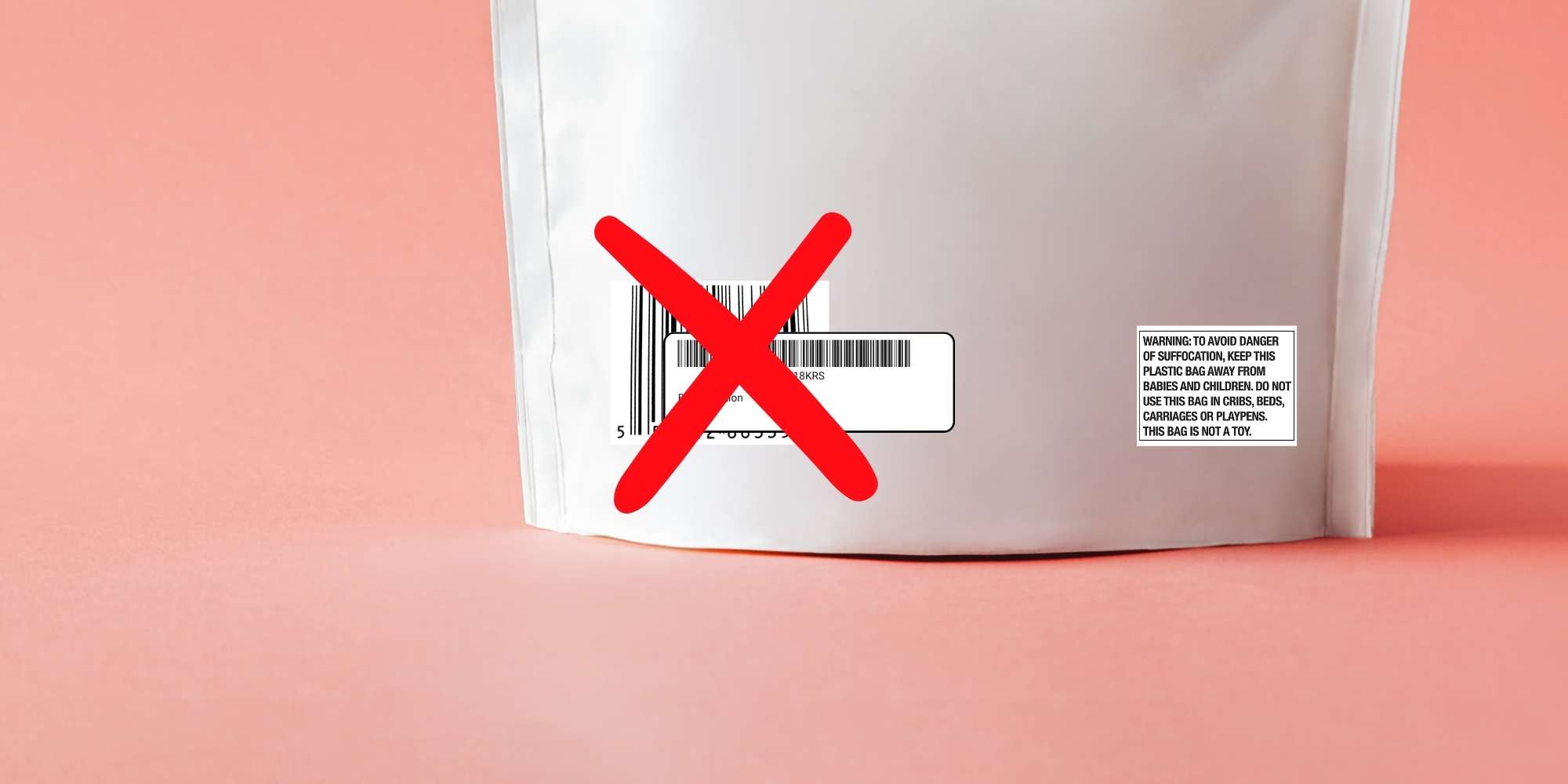
Proper labeling is crucial for Amazon to identify and track your jewelry inventory. Here are the key points to get right with barcodes and labels:
- FNSKU vs. UPC: Amazon needs each unit to have a unique identifier. If you’re using Amazon’s FNSKU barcodes (preferred for FBA to keep your stock separate from others), print and stick the FNSKU label on each unit’s outer packaging. If you rely on the manufacturer’s UPC code instead (commingled inventory), ensure that UPC is present and easily scannable on the item. Pro tip: Many sellers opt for FNSKU labels even if they have a UPC, to avoid any chance of another seller’s item getting mixed in.
- Placement of Labels: Always put the barcode label on a flat, easily accessible surface of your product’s package. Don’t wrap labels around corners or curves (like around a small round jar or the edge of a box) – it makes scanning difficult. For tiny jewelry items that can’t fit a full label on them, that’s exactly why Amazon says to bag them: you can then stick the label on the bag instead of the product.
- Cover Other Barcodes: If the item or its packaging has any other barcodes (UPC, EAN, etc. that are not the one you want Amazon to scan), cover or remove them. This avoids confusion – you don’t want the wrong barcode getting scanned when Amazon receives your shipment. For example, I always black out or sticker over the manufacturer’s barcode on a jewelry box once I affix the Amazon FNSKU label on the outside.
- Labeling Sets and Variations: As mentioned, sets need a single label for the whole set. Also, each variation of a product (different colors, styles) must have its own barcode/FNSKU. Double-check that you didn’t accidentally put the same barcode on two different items. Amazon will treat identical barcodes as identical products, so mislabeling can result in the wrong item being shipped to a customer.
- Quality of Labels: Print labels clearly (laser printer or thermal printer works best so they don’t smudge or fade). It’s worth using good label stock – you don’t want them peeling off in transit. Place them securely; a half-peeled label that falls off means that unit effectively has no identity when Amazon tries to check it in.
- Additional Info: If your item is subject to other labeling (like expiration dates, lot codes, or special handling icons), make sure those are present without obscuring the main barcode. Jewelry typically won’t have expiration dates, but if you include things like material certificates, you don’t need extra labels unless Amazon specifically requires it for that category.
Checklist – Labeling:
- Use either a UPC/EAN (manufacturer barcode) or an Amazon FNSKU label on every unit. No unit should be un-barcoded.
- If using FNSKU, ensure you’ve printed the correct label for each SKU/variation (double-check ASIN/SKU matches the item).
- Cover or remove any other barcodes on the product or inner packaging (except serial number barcodes or Transparency codes if you use those programs).
- Stick the barcode label on the outside of any bag or shrink wrap – it must be immediately scannable.
- Do not let the label curve around edges; flat placement only. For small boxes, the front or back face is best.
- Make sure the label is legible and not obscured by tape, seams, or dirt. (Don’t place the label right on a packaging seam or where it can get rubbed off.)
- For Seller Fulfilled Prime, still label thoroughly – it will help you in order fulfillment and any warehouse storage you use. Treat your stock with the same diligence as Amazon would.
Managing FBA doesn’t have to be a hassle.
Partnering with a FBA Prep expert like eFulfillment Service means you can focus on growing your business while we handle the details. Request a Free Quote Today!
Fragility & Drop Test Requirements
Jewelry might not be as obviously breakable as glassware, but you still need to ensure its packaging is sturdy. Amazon’s rules about drop tests and packaging integrity are especially relevant if your jewelry is in a decorative box or has any exposed parts.
Video Source: Amazon Packaging – Flexible SIPP Packaging Demonstration
The 3-Foot Drop Test:
Amazon requires that a packaged unit can withstand a drop of 3 feet on a hard surface without the contents breaking or escaping. In fact, their guideline is to drop the item on each side and one corner – essentially a mini crash-course for your product. If you have a jewelry box with a delicate hinge or a display window, ask yourself: Would this survive being dropped on a warehouse floor? If the answer is “probably not,” you need to improve the packaging (e.g. add a poly bag or padding).
Above: An illustration of Amazon’s drop-testing sequence – packages are dropped on faces, edges, and corners to ensure durability. Your jewelry’s packaging should survive this test without the item or pieces flying out.
Seal Openings & Loose Parts:
Many jewelry items come in pretty retail packaging that might have a perforated hang tag, a clear window, or a lid that isn’t taped shut. Those are red flags for Amazon’s drop test. If a box has an opening or can come open on its own, you must secure it (tape it shut, or enclose it in a poly bag).
If it has a window or cut-out, the item inside might pop out when dropped – Amazon specifically says that any box with perforated sides or openings must either pass the drop test or be bagged. So, if you have a fancy earring box with a little display window, either reinforce it so nothing can fall out, or just stick the whole box in a poly bag to contain everything (don’t forget the suffocation warning in that case).
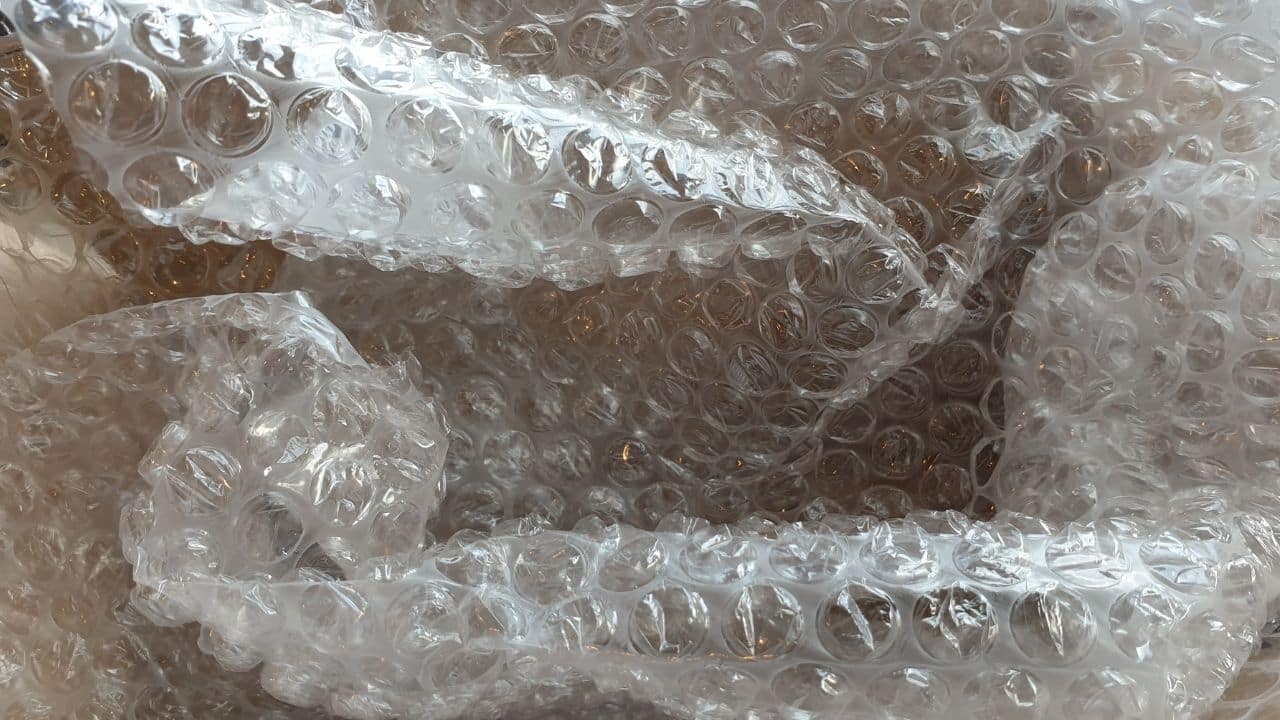
Bubble Wrap for Fragile Pieces:
Is your product itself fragile? For instance, a delicate glass pendant or a watch with a crystal face might warrant extra protection. Amazon’s policy for fragile items is that they should be packed in a six-sided rigid box or completely wrapped in bubble wrap so no part is exposed.
If you choose bubble wrap, wrap the item tightly, tape it so it can’t slip out, and then put the barcode on the outside of the bubble wrap. The bubble-wrapped item also needs to survive the 3-foot drop test without damage. For small jewelry, bubble wrap is usually not necessary unless you have something like a glass jewelry box or a particularly breakable ornament – but keep it in mind if applicable.
“Shake and Drop” Test It Yourself:
As a seasoned seller, I highly recommend doing a quick torture-test on your prepared item before sending it in. Shake the package and drop it from waist height onto a hard floor a few times. If the jewelry stays put and nothing breaks, you’re likely good to go. If you hear rattling or see the box pop open, fix it now – add tape, more padding, or bag it up. This home-grown test mirrors Amazon’s requirements and can save you from prep rejection or customer complaints. Amazon even suggests that sellers “run your own drop test” as a best practice.
Fragile Labels and Handling:
Note that Amazon warehouses don’t really honor “Fragile” stickers in the inbound process – their systems are standardized. It’s on you to pack it so it doesn’t break. That said, if you are fulfilling orders yourself (SFP or FBM), you can certainly mark the outbound package as fragile for the carrier, but internal Amazon prep should treat every item as if it may be dropped regardless of stickers.
Overboxing Heavy or Expensive Items:
If your jewelry item is heavy for its size or particularly high-value, consider overboxing it. Overboxing means putting the individual product box into a second outer box for added protection. Amazon might require overboxing for items that can’t pass a drop test or are in liquid form, etc. For jewelry, overboxing is uncommon unless it’s a luxury piece in a display case that could be damaged – but it’s an extra step you can take for peace of mind, especially in Seller Fulfilled Prime where you control final shipping.
Checklist – Fragility & Testing:
- Secure all lids and openings: Tape shut any box that could open, and seal any product with open windows in a poly bag or add a security seal.
- Perform a 3-ft drop test on your packaged item (each side plus a corner)sitruna.com. Does it stay intact? If not, improve the packaging.
- Add padding for delicate pieces: Use bubble wrap if needed, and ensure the item is fully encased (no parts exposed). Tightly tape bubble wrap so it doesn’t unravel.
- If bubble wrapped or bagged, attach the barcode on the outside of that outer layer.
- No loose parts inside: if your jewelry has multiple components (e.g. pendant and chain) in the box, consider small cushioning or zip-ties to prevent them from banging around during drops.
- For Seller Fulfilled Prime shipments, use strong shipping boxes and plenty of cushioning when mailing to customers. You might not have Amazon’s drop test, but UPS/FedEx certainly will drop things in transit! Pack your outbound box to pass a rough handling test as well.
Lower Your Costs with Smarter FBA Prep.
Partner with eFulfillment Service to move inventory faster and free up cash flow. We help Start-Ups optimize operations so products don’t sit on shelves. Request a Free Quote today!
FBA vs. Seller Fulfilled Prime: Does It Matter?

We’ve discussed these rules mostly in the context of FBA (Fulfilled by Amazon), where Amazon warehouse staff will be handling your jewelry stock. If you’re doing Seller Fulfilled Prime (SFP) or even just FBM (Fulfilled by Merchant), you might wonder if the same prep is necessary. The answer: Yes – the best practices still apply. Here’s why:
- Customer Experience: Prime customers expect items to arrive in perfect condition, regardless of who ships it. If you skip poly-bagging a velvet ring box and it arrives covered in dust or scuffed up, you’ll likely get a return or negative review. Following Amazon’s FBA prep standards for your self-fulfilled orders ensures a professional presentation and happy customers.
- Inventory Protection: Even outside of Amazon’s fulfillment centers, keeping your small items barcoded and bagged helps you stay organized. It prevents losses in your own storage and makes order packing easier – you can scan the item’s barcode to confirm you picked the right product.
- Future FBA Use: Many sellers switch between fulfillment methods. Prepping your jewelry to FBA standards from the start means if you ever send those units to Amazon later, they’re already compliant. If Amazon ever does spot-check SFP items (for example, if a customer returns an item to an Amazon hub), having them properly prepped can’t hurt.
- No Exemptions for Prime: Amazon doesn’t give SFP sellers a pass on packaging. While they might not inspect your warehouse, they will hold you accountable for any high defect rates or customer complaints. Consistent, high-quality prep is part of maintaining your Prime privileges.
In short, whether Amazon or you ship it out, prep jewelry items with the same care. It’s part of treating your products and customers with respect.
Summary & Key Takeaways:
Prepping small jewelry items for Amazon might seem detailed, but once you establish a routine, it becomes second nature. Think of it like creating a protective armor for each precious piece:
- Bag it if it’s loose or prone to dirt (clear, sturdy poly bags with warnings as needed).
- Box it or wrap it if it’s fragile, and make sure that box stays shut tight.
- Barcode it properly on the outside so Amazon (or you) can scan it in a flash.
- Test it by dropping and jostling – better you find a weakness in packaging than Amazon does.
Following Amazon’s rules on bagging, labeling, and drop-testing, you’ll avoid most common FBA prep pitfalls. I’ve learned that Amazon’s strict guidelines really do align with practical, real-world shipping safety. Invest time in prep now, save yourself headaches later. Your inventory will move through Amazon’s fulfillment process smoothly and land in your customer’s hands looking as good as new. And that means higher seller ratings, fewer returns, and more repeat business for you.
Ready to talk FBA Prep solutions? The team at eFulfillment Service is happy to help answer questions and set you up for fulfillment success. Here’s to fewer headaches and more growth ahead!




0 Comments